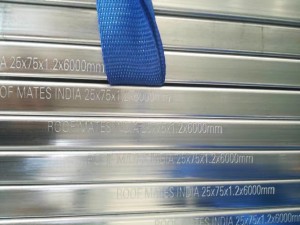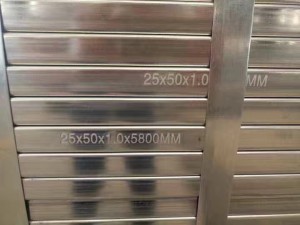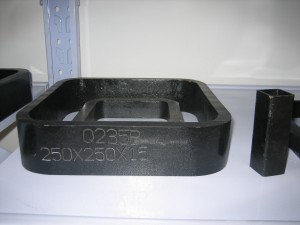Steel pipe stamping usually refers to the printing of logos, icons, words, numbers or other markings on the surface of the steel pipe for the purpose of identification, tracking, classification or marking.

Prerequisites for steel pipe stamping
1. Appropriate equipment and tools: Stamping requires the use of appropriate equipment and tools, such as cold presses, hot presses or laser printers. These equipments should be professional and able to provide the required printing effect and precision.
2. Suitable materials: Choose suitable steel stamping molds and materials to ensure a clear and lasting mark on the surface of the steel pipe. The material should be wear-resistant, corrosion-resistant and able to produce a visible mark on the surface of the steel tube.
3. Clean Pipe Surface: The surface of the pipe should be clean and free of grease, dirt, or other obstructions prior to stamping. A clean surface contributes to the accuracy and quality of the mark.
4. Logo Design and Layout: Prior to steel stamping, there should be a clear logo design and layout, including the content, location, and size of the logo. This helps to ensure consistency and readability of the logo.
5. Compliance and safety standards: The content of the logo on the steel pipe stamping should meet the relevant compliance standards and safety requirements. For example, if the marking involves information such as product certification, load carrying capacity, etc., its accuracy and reliability should be ensured.
6. Operator skills: Operators need to have the appropriate skills and experience to operate the steel stamping equipment correctly and to ensure the quality of the marking.
7. Tube characteristics: The size, shape and surface characteristics of the tube will affect the effectiveness of the steel marking. These characteristics need to be understood before operation in order to select the appropriate tools and methods.

Stamping methods
1. Cold Stamping: Cold stamping is done by applying pressure to the surface of the steel pipe to stamp the mark on the pipe at room temperature. This usually requires the use of special steel stamping tools and equipment, will be stamped on the surface of the steel pipe through the stamping method.
2. Hot Stamping: hot stamping involves stamping the steel pipe surface in a heated state. By heating the stamping die and applying it to the steel pipe, the mark will be branded on the surface of the pipe. This method is often used for logos that require deeper imprinting and higher contrast.
3. Laser Printing: Laser printing uses a laser beam to permanently engrave the logo on the surface of the steel tube. This method offers high precision and high contrast and is suitable for situations where fine marking is required. Laser printing can be done without damaging the steel tube.

Applications of steel marking
1. Tracking and management: Stamping can add a unique identification to each steel pipe for tracking and management during manufacturing, transportation and use.
2. Differentiation of different types: Steel pipe stamping can differentiate between different types, sizes and uses of steel pipes to avoid confusion and misuse.
3. Brand identification: Manufacturers can print brand logos, trademarks or company names on steel pipes to improve product identification and market awareness.
4. Safety and compliance marking: Stamping can be used to identify the safe use of the steel pipe, load capacity, date of manufacture and other important information to ensure compliance and safety.
5. Construction and engineering projects: In construction and engineering projects, steel stamping can be used to identify the use, location and other information on the steel pipe to help with construction, installation and maintenance.
Post time: May-23-2024






